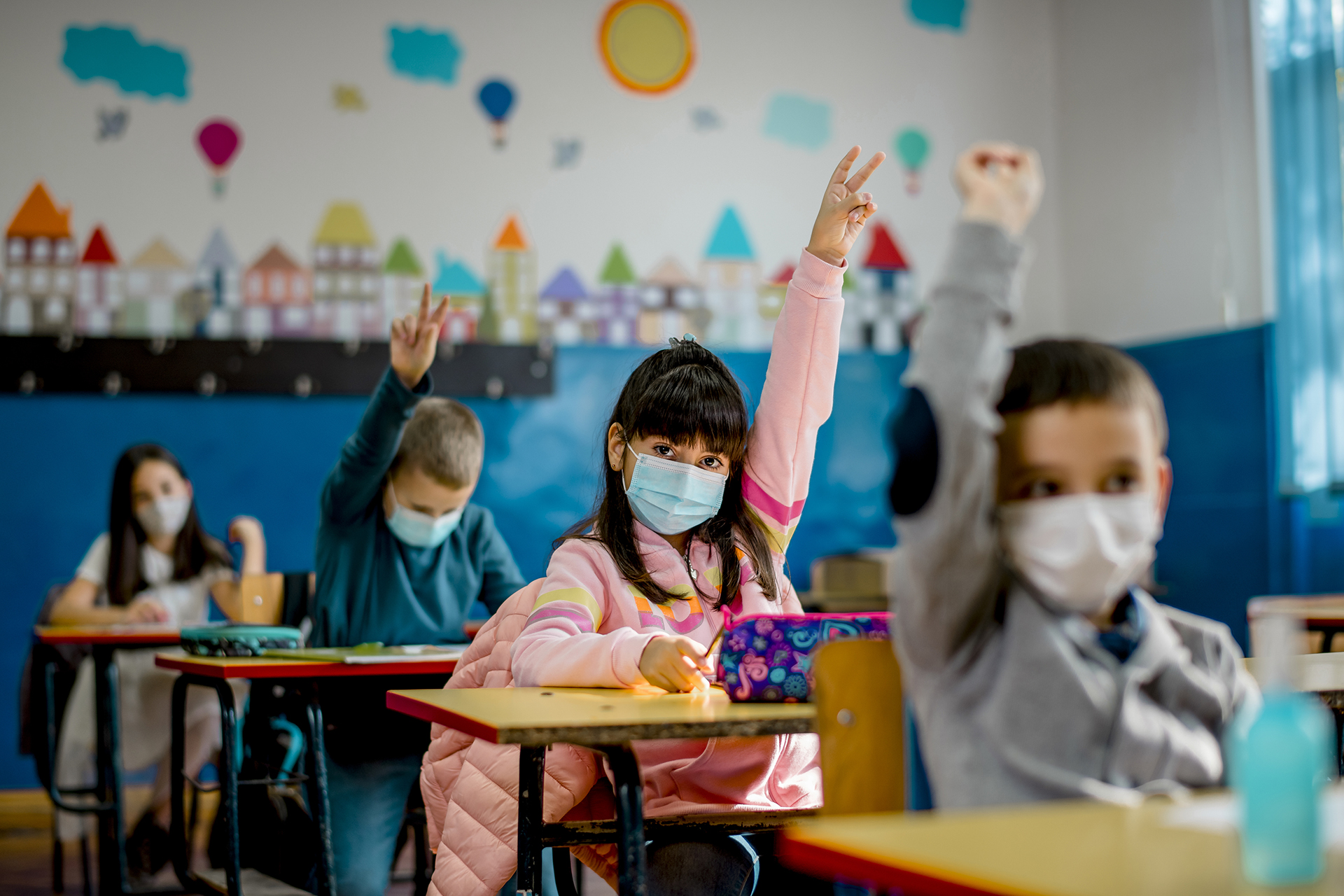When the COVID-19 pandemic forced the closure of K-12 campuses across North America, education became disconnected from schools. This was unprecedented—and challenging. Families had to support their children as they learned online, teachers had to use unfamiliar technology to work in entirely new ways, and students had to cope with isolation, anxiety, and the loss of treasured traditions ranging from elementary school field days to senior proms. Today most schools have reopened, but the effects of the pandemic linger in the masks worn by teachers and students, the plexiglass barriers separating desks, and the social distancing enforced in hallways, cafeterias, and gyms.
APPA considered the issues of place and space on campus in a Thought Leaders report released earlier this year. The educational facilities experts consulted for that report included both higher education and K-12 education staff, but the report itself focused on the needs of colleges and universities.
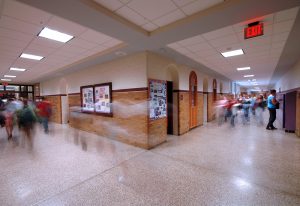 However, K-12 schools differ in many important ways from institutions of higher education. APPA returned to the topic and consulted educators and facilities officers on the importance of sense of place on K-12 campuses and the changing needs and expectations of their communities. Sources came from across the United States and include representatives of both public schools and districts and private and independent schools.
However, K-12 schools differ in many important ways from institutions of higher education. APPA returned to the topic and consulted educators and facilities officers on the importance of sense of place on K-12 campuses and the changing needs and expectations of their communities. Sources came from across the United States and include representatives of both public schools and districts and private and independent schools.
While each of these sources’ campuses had unique needs, they were united in their call for safe and healthy spaces that provide a welcoming environment, foster learning, and help create a sense of belonging. The value of a strong sense of place echoed through their responses. Many spoke of the iconic spaces that reflect the values of their schools and promote a sense of connection among students.
Schools who appreciate the value of their built environment as meaningful places with the power to foster learning and promote belonging will have an advantage going forward. They will bring new focus on improving the school experience for the entire community.
The Role of Place from Early Childhood to Young Adulthood
Developing a sense of place helps children grow into confident adults who understand their role in the community, according to the National Association for the Education of Young Children (NAEYC). The organization describes a sense of place as “an essential part of cognitive, social, and emotional development” that helps children feel connected and secure. Children who have repeated, positive interactions within their communities come to understand that they belong to certain places and people. This sense of belonging is a powerful thing, according to Diane Kashin, retired professor of early childhood education at Ryerson University in Toronto. Children who lack a sense of belonging feel disconnected, even unsafe—a state in which it is difficult for them to learn. In this state, their self-confidence and identity might be affected by a feeling that they are “other” and not worthy of acceptance. In contrast, children with a strong sense of belonging and connectedness can engage, explore, and learn, says NAEYC.
Promoting belonging and connectedness remains critical as students grow into young adulthood. Studies have shown that students who report that they feel like outsiders at their schools score on average 22 points lower in science than students who report feeling connected, according to the Organisation for Economic Cooperation and Development’s Programme for International Student Assessment.
Element of Sense of Place on the K-12 Campus
The K-12 teachers and administrators interviewed for this report identified the following elements of a campus with a strong sense of place:
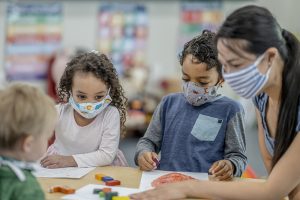 Provides a safe space for students, teachers, and administrators. Safety is the number one priority of schools, and several experts interviewed for this report used the word “safe” or “safety” in describing the role of the K-12 campus. Numerous studies agree that students’ ability to learn depends on their feeling safe at school, according to Education Week. “High-stress environments in which students feel chronically unsafe and uncared for make it physically and emotionally harder for them to learn and more likely for them to act out or drop out,” states the article.
Provides a safe space for students, teachers, and administrators. Safety is the number one priority of schools, and several experts interviewed for this report used the word “safe” or “safety” in describing the role of the K-12 campus. Numerous studies agree that students’ ability to learn depends on their feeling safe at school, according to Education Week. “High-stress environments in which students feel chronically unsafe and uncared for make it physically and emotionally harder for them to learn and more likely for them to act out or drop out,” states the article.
The COVID-19 pandemic brought a new risk to the fore: contagious disease. Many schools are now focused on constructing or modifying their buildings to increase social distancing, reduce the risk of microbial transmission on surfaces, and increase air flow. School design can play a major role in keeping students and teachers healthy.
- Is a welcoming environment to all. The sense of welcome the school offers to students, parents, teachers, and administrators shapes the experience of the school community. A major challenge is finding creative ways to be welcoming while ensuring safety. For example, a report on the design of safe and welcoming school environments by the American Institute of Architects (AIA) notes that some high schools rely on metal detectors to screen everyone upon entry. This may be necessary, but students often report feeling less safe when they see these sorts of security measures in action. The AIA suggested schools make metal detectors less obvious and focus on increasing the control and visibility of entrances. One critical factor is ensuring that welcome extends to all. For example, school designers should pay particular attention to accommodating individuals with disabilities.
Designers should also consider the level of welcome extended to parents. One of the K-12 facilities experts interviewed for this report emphasized the role that parents play on many campuses. Many schools, both public and private, have parent groups who spend significant time on campus. Schools should consider how well they accommodate and welcome these volunteers and supporters.
- Connects the school to the wider community. The AIA reported that “the relationship between schools and their communities has broken down, alienating schools from social networks.” The COVID-19 pandemic worsened the situation. Students and teachers spent months away from their school campus and interacted only via technology. Some school campuses were able to reconnect to their communities during this time by partnering with public health providers to offer testing and/or vaccination.
- Creates a rich environment that fosters learning. The schools of a century or more ago were very different places than the schools of today. Learning was expected to take place in tidy desks in neat rows, and students worked on their own, asking only the teacher for help. Today, students cluster around whiteboards or sit in circles on the floor. They concentrate not on single subjects but on projects that integrate literature, history, math, and science. Learning can take place anywhere—in classrooms, small group rooms, large common spaces, or outside. Teachers serve as coaches, guides, and resources, not just imparting knowledge but guiding students to discover it on their own.
- Teaches students how to become autonomous, responsible members of the community. One of the K-12 sources interviewed for this report made this point: “Schools are places that help children acquire the skills that will serve them in adulthood. And that happens when you are intentional about providing them opportunities to develop those skills.” The built environment can play a role by allowing students some level of control over their space. Schools should find ways to allow self-expression and personalization of the learning environment.
- Promotes connection and identity. Growing up is a process of discovering one’s own identity. Students come to understand who they are and what they value because, in part, they understand what their community and their school expects of them.
Opportunities for K-12 Schools Created by a Focus on Sense of Place
A focus on creating a sense of place creates several opportunities for schools, including the following:
- Improves the environment for learning. Students are better able to learn in an environment that is designed and operated for maximum comfort. One source consulted for this article discussed the importance of removing distractions that could get in the way of learning. “A ticking air-handler fan, a flickering light, or a classroom that is too hot or too cold can be a major distraction,” he said.
- Provides visual connections to anchor the school to the community. One source interviewed noted that her school recently added a large clock tower that has become an iconic place not only for students but also the entire community. The tower proclaims the prominent role of the school within the area. It marks when individuals enter the school grounds and serves as a point of interaction between the campus and the neighborhood. It has become iconic in only a short period of time, an indication that perhaps the school and community needed such a marker.
- Appeals to prospective families. This is a particularly important point for private or independent schools. Parents will naturally compare one school’s facilities to others’, and the quality and care put into the campus can be a significant factor in their final decision. However, maintaining an appealing campus is relevant to public schools as well, since many school districts now offer families significant choice in which schools their children attend.
- Helps create memories and a sense of attachment for alumni. Alumni can be important supporters of schools, both public and private. They provide funding, support within the community, and often send their own children to the school. Private and independent schools turn to alumni for donations, while public schools need the support of alumni during bond elections to fund construction and renovation.
Addressing Changing Space Needs and Requirements
The last few years placed unprecedented demands on everyone within education, demands that strained resources—and nerves. One K-12 expert described her district’s search for plexiglass to erect shields between desks. What had been a commonplace material was suddenly almost impossible to find.
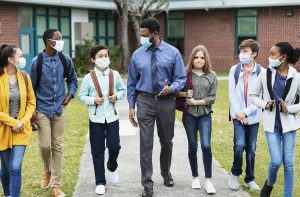
Most schools have settled into a new normal and are better able to predict their needs going forward. Facilities professionals should work with their school and/or district leaders to prioritize needs and set goals. Major priorities will likely include the following:
- Improve the health and safety of the campus. The COVID-19 pandemic brought unprecedented attention to issues such as air quality and surface cleaning protocols. The work of the facilities management organization took center stage as schools concentrated on limiting disease transmission.
- Increase flexibility to meet new challenges. Schools across North America are seeking increased flexibility in their spaces to accommodate new pedagogy. In particular, teachers are looking for ways to enable more frequent group work and team projects.
- Expand outdoor learning spaces. Multiple K-12 experts interviewed for this report described how their schools have moved classes outside when possible, even though climate limits how often this strategy can be used. Facilities experts can make outdoor spaces useful, comfortable, and accessible to all students. Key ingredients to creating an outdoor classroom include selecting a location with natural shade, providing whiteboards and seating (such as stumps or logs), offering storage, and building raised flower or garden beds.
- Build on technology advances. Experts could never have predicted the transformation in learning from classrooms to online at the outbreak of COVID-19. Schools have made incredible strides in creating infrastructure for online learning, overcoming barriers to access, and finding effective strategies for teaching through a screen.
We encourage school leaders and facilities professionals to consider the following questions. They can be a jumping-off point to help your school focus on place and space as you determine your goals for the near future.
- What are our existing iconic spaces? What message do we want these spaces to communicate? How can we support and enhance these spaces? How can we create memorable experiences connected to these spaces?
- How welcoming is our school building? How well does our campus foster a sense of belonging? What steps can we take to increase feelings of welcome and belonging among students?
- How flexible are our classrooms and school buildings? How well did the school built environment adapt to the challenges of the past few years? How can the school increase the flexibility of classrooms, buildings, and outdoor spaces?
- How healthy and safe is our built environment? What steps do we need to take to improve the health and safety of our campus?
- What steps does the facilities management organization need to take to establish priorities and chart a path for the future? How can facilities management best serve the children in our care?
Conclusion
One of the experts interviewed for this report recently met with alumni who graduated in 1970 from the school where she works. The building has been extensively renovated in the intervening years, but nevertheless the former students were quick to discover places they remembered and spaces that held special meaning. Stories poured out about events that had taken place more than half a century ago—and reminded our expert that the students of today will one day have their own memories about the place where they learn.
Our society places enormous demands on K-12 schools. During the worst months of the COVID-19 crisis, teachers and administrators struggled to keep their heads above water. The world has changed since March 2020, and school and district facilities management organizations must change with it.
It is good, then, to sometimes be reminded that an education means more than checking off a list of requirements, and that a school is more than a blank space where those boxes get checked. A school is a place of community, of connection, of welcome and belonging. It is a place where students discover their identities beyond their families and begin the process of becoming adult members of society.
A renewed focus on sense of place is a powerful tool for educators and facilities management experts as we move into a new normal. It helps them keep students—their needs and their potential—at the forefront of decisions about K-12 school facilities.
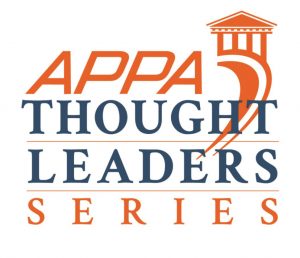
Expert Sources
APPA thanks the following individuals for their contributions to this report:
Jessica Abbott, Director of Facilities
Wolcott Public Schools, West Hartford, CT
Robert Aldrich, Director of Operations and Campus Planning, and members of the Leadership Team
Hackley School, Tarrytown, NY
Kim Greer, Principal
Langley High School, McLean, VA
Charlotte Kamikawa, Director of Facilities
Punahou School, Honolulu, HI
Patricia Sandoval-Taylor, Director of Language Acquisition
Tucson Unified School District, Tucson, AZ
Mike Steger, Director of Facilities Management
Berkeley Preparatory School, Tampa, FL
Elizabeth Lunday is an independent writer based in Fort Worth, TX, and she can be reached at [email protected]. While this is her first article for Facilities Manager, she has served as the primary author of every APPA Thought Leaders report since the Thought Leaders Series was introduced in 2006.
This article has been excerpted from a larger report on the value of space and place at the K-12 level. APPA’s 2021 Thought Leaders report, Connections, Space & Place, focused on colleges and universities, and the supplemental report on K-12 will be available as a separate document from the APPA Bookstore. APPA thanks business partners Johnson Controls and Siemens for their support of the Thought Leaders Series.
